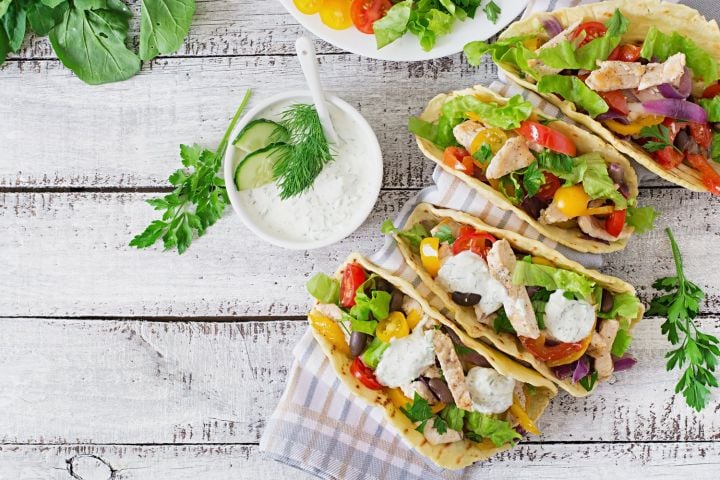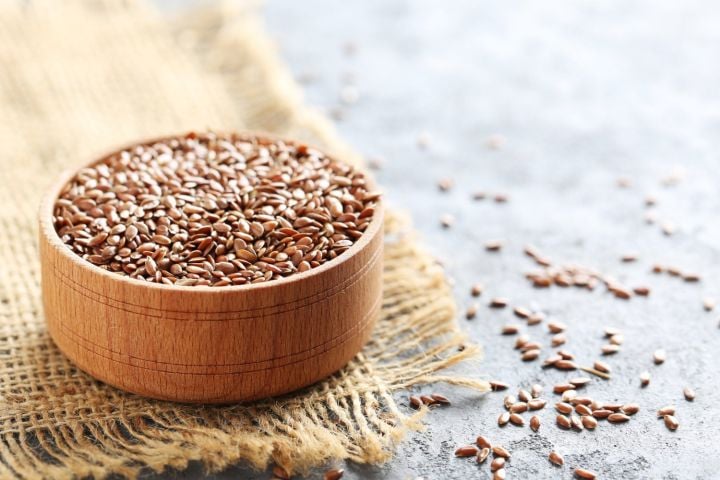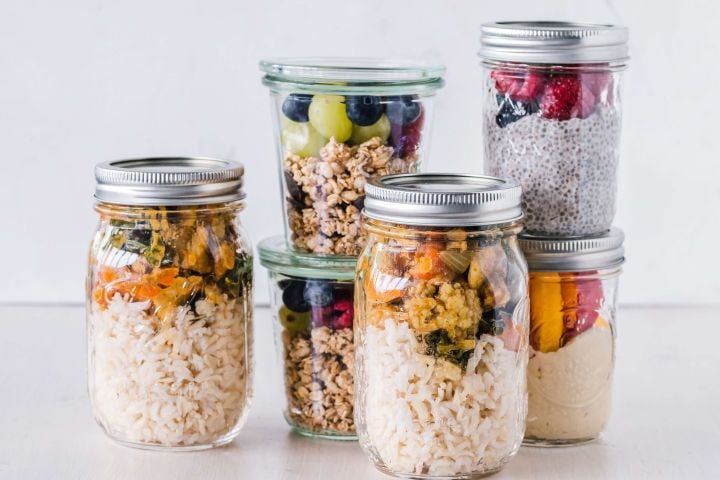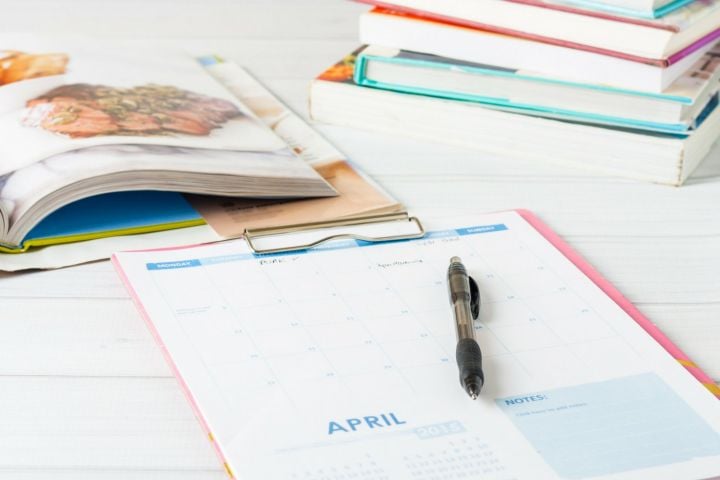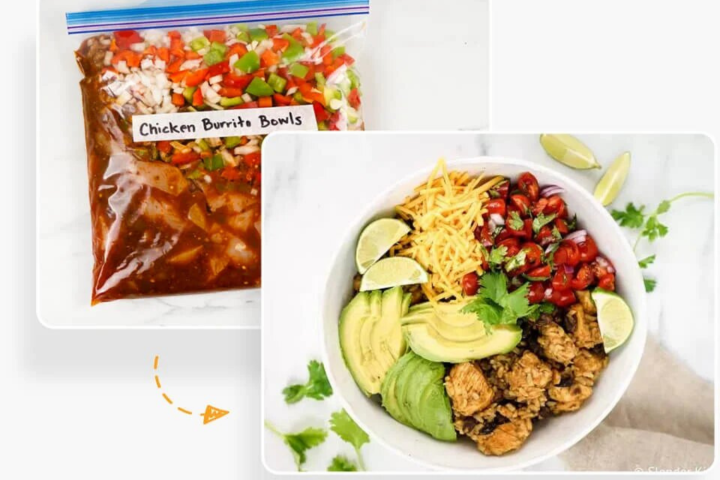How to Create a Healthy Meal Plan

One of the keys to sticking to any diet or healthy eating routine is having a plan. But creating that plan can feel hard, especially when you are just starting. With so many recipes out there and hectic schedules, making an eating plan can feel impossible at times. But luckily with a little help, creating a healthy meal plan can not only be easy, but fun.
Better yet, you’ll find that meal planning is one of the best things you can do to truly set yourself up to be successful. Knowing what’s for dinner and having everything you need in your fridge, will not only help you stay on track, but it will help you save money and waste less food. Just imagine, a fridge full of food with a purpose instead of one stocked with everything that looked good while you shopped. It’s game changing.
Whether you start big or small, take some time this week to create a meal plan and we promise, you’ll immediately see the different it can make. Plus, we’ve broken it down into a few easy steps to help you get started.
Part 1: Evaluate Your Meal Planning Needs
- Check out you schedule: The very first thing you want to do is take a hard look at your schedule to determine two things. First you want to figure out what meals you should plan for. Do you have dinner plans or always eat out on Fridays? Take that into account. You only want to plan for meals you will actually eat at home. Secondly, you want to assess how busy your days will be. Will you need quick and easy meals that are ready in 20 minutes or do you have time for a meal that requires more TLC.
- Think about your tastes and food needs: One of the harder things about meal planning can be choosing the recipes. Having some ideas about how you like to eat will help make selecting meal ideas easier. Do you have to eat pasta every week? Do you like to eat fish once a week? Do you like seasonal recipes or classics? Have you been craving anything? All these questions can help you make quicker decisions about what to include in your meal plan.
- Decide on leftovers and repeats: This question is a simple one but a very important one – do you like to eat leftovers or not? If you love leftovers, you’ll want to plan on extra portions so you can eat them for lunches or to replace dinner another night of the week. And don’t forget that leftovers can always be reimagined? Tonight’s fish dish would make awesome fish tacos a few days later. This also applies to repeats, especially when it comes to breakfast and lunch. Are you willing to eat the same thing a few different days? If so, you can plan for less.

Part 2: Map Our Your Meal Needs
The next step is a quick one, but an important one. You want to quickly write down what meals you need and any important descriptors for those meals. For example, you may write that you need:
- Two portable breakfast recipes (to be eaten 3 times each)
- Two quick and easy dinner recipes (one chicken and one beef)
- One special family meal for birthday dinner
- One fish recipe
- One slow cooker recipe that can be used for dinner and lunches
Budget Saving Tip: If you are working on saving money, this would be the place to pull out your weekly supermarket circular or coupons. Match the specials to the meals you want to prepare so you can make sure to take advantage of the savings. For example, if chicken breast is on sale, you may write that you need a quick and easy chicken breast recipe.
Part 3: Collect Your Recipes
Now comes the fun part, finding all the delicious recipes you want to eat during the week. To keep things efficient, I like to start by filling in any tried and true meals that I know I want to make that week. Maybe it’s Mom’s meatballs, your son’s favorite pasta, or your favorite grilled chicken. Start with the recipes you know you want to make.
Then head out to your favorite recipe websites, magazines, or cookbooks and choose meals that fit your needs. Since there are so many recipes out there, it can help to collect your favorites along the way and keep them for quick reference. You can go old fashioned and use a three ring binder or use a more tech savvy solution like Evernote or a recipe app. It also helps here to have a few go-to websites/cookbooks that you know you can count on.
And if you are a community member on Slender Kitchen or use our meal plans, you can simply select the heart icon on any of the photos to save the recipes to your Favorites.

Part 4: Create Your Calendar and Shopping List
The last step is creating your weekly calendar and shopping list. You can calendar it anyway you like - on the fridge, in a planner, on your computer, or in a printable calendar. Then go to each recipe and create your shopping list. Make sure to adjust the recipes for the number of servings you need plus any leftovers.
Tips and Tricks for Making a Healthy Meal Plan Faster
Although these steps can help you build out a better healthy meal plan, it doesn’t necessarily mean that you will be able to figure out your needs, make a plan, find recipes, and write out a shopping list quickly. In fact, lots of people find that meal planning can take quite a long time.
Luckily there are lots of ways to speed things up so that you can spend your Sundays relaxing and exploring instead of planning.
- Get some help! Having struggled with this ourselves, Slender Kitchen offers weekly healthy meal plans that can be fully customized to your needs and schedule. Each week we will send you a healthy, low carb, or vegetarian meal plan full of easy and delicious recipe suggestions. Then you simply customize that plan based on your week and cravings with a few clicks, download your shopping list, and you are ready to go. Learn more about our meal plans, try out the demo or download a free week’s meal plan.
- Utilize leftovers: Since we don’t all have time to cook every night, utilizing leftovers is a great way to make meal planning easier. You can repurpose your grilled chicken from one night into delicious tacos another night. Or you can make a big batch of breakfast sandwiches on Sunday to enjoy for breakfasts throughout the week. We have a special feature in our meal plans that makes using leftovers a no brainer and its something we incorporate every week for breakfasts and lunches.
- Constantly collect recipes: Since one of the parts of meal planning that takes the longest is finding recipes, it’s helpful to have a stockpile to depend on. I like to separate mine by course and ingredients so I can quickly pull something I need.
- Get help with servings: The other thing that can slow down meal planning is changing the servings on recipes to meet your needs. Our meal plans do that automatically for you and so do all our recipes.

